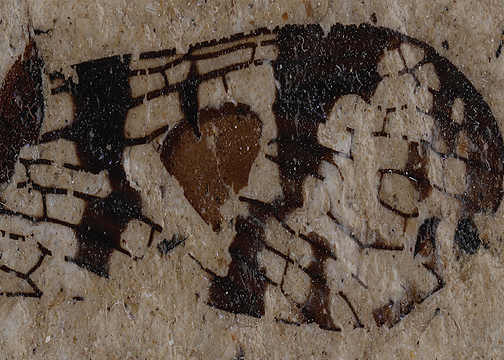Abstract
The extant representatives of the order Mecoptera (except Siphonaptera now considered to belong to the Mecoptera: Tihelka et al., 2020) are famous among insects because of their long beaklike rostrum but also, because the males of the family Panorpidae have enlarged genitals raised over the body, and are called scorpionflies. The order Mecoptera is thought to have arisen during the Carboniferous period (Misof et al., 2014), a dating corroborated by their abundant fossil record during the Permian period (https://paleobiodb.org), and the presence of the antliophoran sister group Amphiesmenoptera during the late Carboniferous (Nel et al., 2007). The origin of the main family of Mecoptera i.e., the Panorpidae, was estimated to date to the Early Cretaceous (ca. 122.5 Ma) (Miao et al., 2019). The phylogenetic relationships within the family Panorpidae were recently investigated and revised using morphological data (Wang & Hua, 2021) and new hypotheses were proposed for their past dispersal events. Wang & Hua (2021: fig. 17) assumed that the Panorpidae originated from Asia and that at least two dispersal events have shaped the west European fauna. Here we describe a new specimen of scorpionfly from the Miocene of Murat (Cantal, France).
References
- Cai, L.J., Huang, P.Y. & Hua, B.Z. (2008) Sinopanorpa, a new genus of Panorpidae (Mecoptera) from the Oriental China with descriptions of two new species. Zootaxa, 1941 (1), 43–54. https://doi.org/10.11646/zootaxa.1941.1.4
- Chau, H.C.-S. & Byers, G.W. (1978) The Mecoptera of Indonesia: genus Neopanorpa. The University of Kansas Science Bulletin, 51, 341–405.
- Gao, C., Ma, N. & Hua, B.Z. (2016) Cerapanorpa, a new genus of Panorpidae (Insecta: Mecoptera) with descriptions of three new species. Zootaxa, 4158 (1), 93–104. https://doi.org/10.11646/zootaxa.4158.1.5
- Gao, K. & Hua, B.Z. (2019) Revision of the genus Cerapanorpa (Mecoptera: Panorpidae) with descriptions of four new species. European Journal of Taxonomy, 537, 1–23. https://doi.org/10.5852/ejt.2019.537
- Gao, K. & Hua, B.Z. (2021) A new species of the genus Cerapanorpa (Mecoptera, Panorpidae) from the eastern Bashan Mountains. Biodiversity Data Journal, 9 (e72451), 1–9. https://doi.org/10.3897/BDJ.9.e72451
- Grimaldi, D.A. & Engel, M.S. (2005) Evolution of the insects. Cambridge University Press, xv + 755 pp.
- Hu, G.L. & Hua, B.Z. (2020) Review of the scorpionfly genus Dicerapanorpa Zhong & Hua (Mecoptera: Panorpidae), with descriptions of two new species. European Journal of Taxonomy, 711, 1–13. https://doi.org/10.5852/ejt.2020.711
- Jouault, C., Marechal, A., Condamine, F.L., Wang, B., Nel, A., Legendre, F. & Perrichot, V. (2021) Including fossils in phylogeny: a glimpse on the evolution of the superfamily Evanioidea (Hymenoptera: Apocrita) under tip-dating and the fossilized birth-death process. Zoological Journal of the Linnean Society, 194, 1396–1423. https://doi.org/10.1093/zoolinnean/zlab034
- Lieftinck, M.A. (1935) Studies in Oriental Mecoptera. I. The genus Leptopanorpa in Malaysia. Treubia, 15, 271–320.
- Ma, N. & Hua, B.Z. (2011) Furcatopanorpa, a new genus of Panorpidae (Mecoptera) from China. Journal of Natural History, 45, 2251–2261. https://doi.org/10.1080/00222933.2011.595517
- Miao, Y., Wang, J.S. & Hua, B.Z. (2019) Molecular phylogeny of the scorpionflies Panorpidae (Insecta: Mecoptera) and chromosomal evolution. Cladistics, 35, 385–400. https://doi.org/10.1111/cla.12357
- Misof, B., Liu, S.L., Meusemann, K., Peters, R.S., Donath, A., Mayer, C., Frandsen, P.B., Ware, J., Flouri, T., Beutel, R.G., Niehuis, O., Petersen, M., Izquierdo-Carrasco, F., Wappler, T., Rust, J., the 1KITE consortium (83 other authors), Wang, J., Kjer, K.M. & Zhou, X. (2014) Phylogenomics resolves the timing and pattern of insect evolution. Science, 346, 763–767. https://doi.org/10.1126/science.1257570
- Nel, A. (2004) New and poorly known Cenozoic sawflies of France (Hymenoptera: Tenthredinoidea, Pamphilioidea). Deutsche Entomologische Zeitschrift, 51, 253–269. https://doi.org/10.1002/mmnd.20040510208
- Nel, A., Arillo, A. & Martínez-Delclòs, X. (1996) New fossil Odonata (Insecta) from the Upper Miocene of France and Spain. (Anisoptera and Zygoptera). Neues Jahrbuch für Geologie und Paläontologie, Abhandlungen, 199, 167–219. https://doi.org/10.1127/njgpa/199/1996/167
- Nel, A., Arillo, A. & Ortuño, V. (1997) New Western Palaearctic Cenozoic Odonata. (Insecta: Odonata: Zygoptera and Anisoptera). Bulletin de la Société Entomologique de France, 102, 265–270. https://doi.org/10.3406/bsef.1997.17342
- Nel, A., Roques, P., Nel, P., Prokop, J. & Steyer, S. (2007) The earliest holometabolous insect: a “crucial” innovation with delayed success (Insecta: Protomeropina: Protomeropidae). Annales de la Société Entomologique de France, (N.S.), 43, 349–355. https://doi.org/10.1080/00379271.2007.10697531
- Rey, R. (1975) Premières données radiométriques relatives à l’âge du niveau pollinique de Reuver. Comptes-Rendus de l’Académie des Sciences, 281, 503–505.
- Roiron, P. (1991) La macroflore d’âge Miocène supérieur des diatomites de Murat (Cantal, France). Implications paléoclimatiques. Palaeontographica, 223, 169–203.
- Tihelka, E., Giacomelli, M., Huang, D.Y., Pisani, D., Donoghue, P.C.J. & Cai, C.Y. (2020) Fleas are parasitic scorpionflies. Palaeoentomology, 3 (6), 641–653. https://doi.org/10.11646/palaeoentomology.3.6.16
- Tillier, P. (2008) Contribution à l’étude des Mécoptères de France. Deuxième partie: clé de détermination des Panorpa de France (Mecoptera Panorpidae). L’Entomologiste, 64, 21–30.
- Wang, J.S. & Hua, B.Z. (2019) Taxonomy of the genus Neopanorpa van der Weele, 1909 (Mecoptera, Panorpidae) from the Oriental region, with the description of two new species. European Journal of Taxonomy, 543, 1–17. https://doi.org/10.5852/ejt.2019.543
- Wang, J.S. & Hua, B.Z. (2019) Megapanorpa, a new genus with a single anal horn in males from Oriental China (Mecoptera: Panorpidae). Entomological Science, 22, 64–79. https://doi.org/10.1111/ens.12336
- Wang, J.S. & Hua, B.Z. (2020) Taxonomic revision and phylogenetic analysis of the enigmatic scorpionfly genus Leptopanorpa MacLachlan (Mecoptera: Panorpidae). Journal of Zoological Systematics and Evolutionary Research, 58, 900–928. https://doi.org/10.1111/jzs.12363
- Wang, J.S. (2021a) A new species of the genus Sinopanorpa Cai & Hua, 2008 from Hubei Province, China (Mecoptera: Panorpidae). Faunitaxys, 9, 1–6.
- Wang, J.S. (2021b) Neopanorpa (Mecoptera: Panorpidae) from the Himalayas and adjacent regions, with descriptions of three new species. Acta Entomologica Musei Nationalis Pragae, 61, 203–212. https://doi.org/10.37520/aemnp.2021.010
- Wang, J.S. & Gong, Y.J. (2021) Taxonomy of the Panorpa guttata group (Mecoptera: Panorpidae), with descriptions of fourteen new species from China. Zootaxa, 4981 (2), 241–274. https://doi.org/10.11646/zootaxa.4981.2.3
- Wang, J.S. & Hua, B.Z. (2021) Morphological phylogeny of Panorpidae (Mecoptera: Panorpoidea). Systematic Entomology, 46, 526–557. https://doi.org/10.1111/syen.12474


